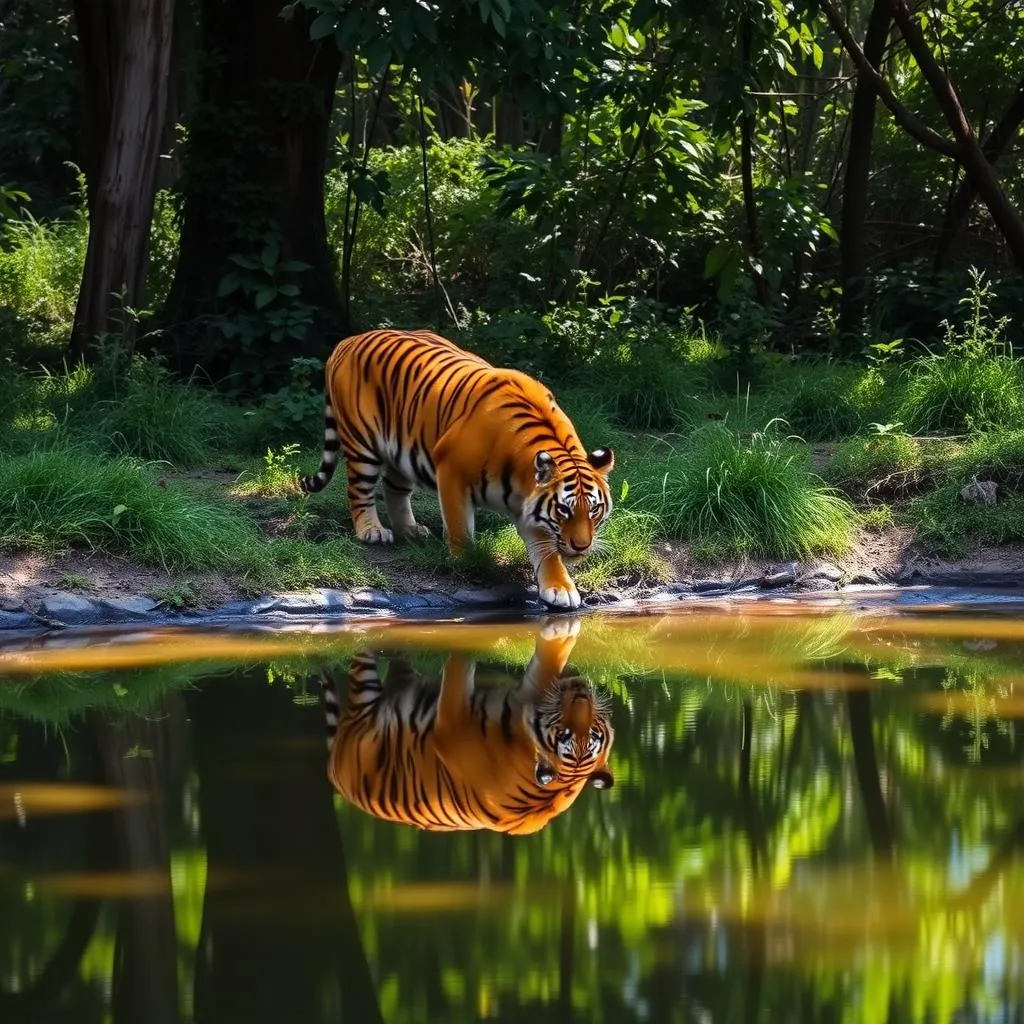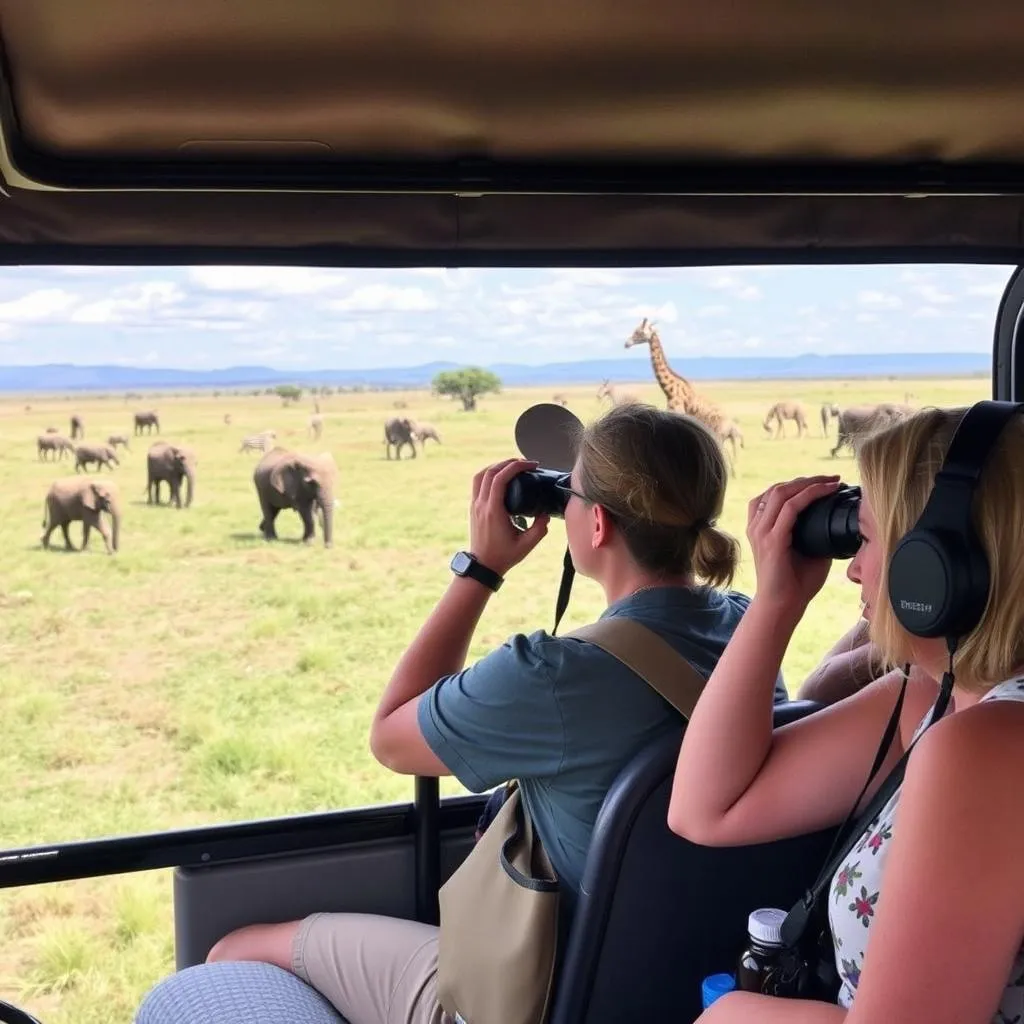The topic of describing an experience with a wild animal is a popular one in IELTS Speaking tests. It allows candidates to showcase their vocabulary, narrative skills, and ability to express emotions. This theme has appeared frequently in past exams and is likely to remain relevant in future tests due to its universal appeal and potential for engaging storytelling.
Part 1: Introduction and Interview
In this section, the examiner may ask you some general questions about animals and wildlife. Here are a few potential questions:
- Do you like animals? Why/Why not?
- Have you ever seen any wild animals in your country?
- What’s your favorite wild animal?
Let’s focus on question 2 as an example:
Examiner: Have you ever seen any wild animals in your country?
Sample answer (Band 6-7):
“Yes, I have. In my country, we have quite a few national parks where you can spot wild animals. I remember seeing deer and monkeys when I went hiking with my family last year. It was really exciting to see them in their natural habitat.”
Sample answer (Band 8-9):
“Absolutely! My country boasts a diverse range of wildlife, and I’ve been fortunate enough to encounter several species in their natural habitats. On a recent expedition to one of our national parks, I observed a herd of elephants grazing peacefully and even caught a glimpse of a elusive leopard. These experiences have truly heightened my appreciation for our country’s rich biodiversity.”
Describe a place in your country where you go hiking to potentially see wild animals in their natural habitat.
Part 2: Long Turn
Here’s a sample cue card related to the topic:
Describe an experience you had with a wild animal
You should say:
- What animal it was
- Where you saw it
- What happened
- How you felt about the experienceSample answer (Band 6-7):
“I’d like to talk about an encounter I had with a wild elephant during a safari in a national park. It was a few years ago when I visited a famous wildlife reserve in my country.
We were in a jeep, driving through the park, when suddenly we saw a huge elephant emerge from the bushes. It was much bigger than I expected! The elephant seemed curious about our vehicle and started walking towards us. Our guide told us to stay quiet and not make any sudden movements.
The elephant came quite close, maybe about 10 meters away from our jeep. It raised its trunk and made a loud trumpeting sound, which was both exciting and a bit scary. After a few minutes of observing us, it slowly walked away into the forest.
I felt a mix of emotions during this experience. At first, I was thrilled to see such a magnificent animal up close. But when it came near our jeep, I felt a bit nervous, realizing how powerful it was. Overall, it was an unforgettable experience that gave me a new appreciation for wildlife and nature conservation.”
Sample answer (Band 8-9):
“I’d like to recount a truly remarkable encounter I had with a wild tiger during an expedition to a renowned national park in my country. This awe-inspiring experience occurred about two years ago when I participated in a wildlife photography workshop.
The animal in question was a majestic Bengal tiger, one of the most iconic and elusive big cats in the world. We spotted it in a secluded area of the park, near a watering hole surrounded by dense vegetation.
As we quietly observed from our camouflaged hide, the tiger emerged gracefully from the undergrowth. It was a breathtaking sight – its orange coat with black stripes gleaming in the dappled sunlight. The tiger seemed unaware of our presence and began to drink from the watering hole. We watched in hushed reverence as it quenched its thirst, occasionally scanning its surroundings with alert eyes.
Suddenly, a deer nearby made a sound, causing the tiger to freeze. In a split second, it transformed from a peaceful drinker to a formidable predator. The way it moved – so fluid yet so powerful – was mesmerizing. However, the deer managed to escape, and the tiger, after a brief chase, returned to the water.
This experience left me feeling absolutely exhilarated and humbled. Being in such close proximity to one of nature’s most perfect predators was both thrilling and terrifying. It gave me a profound appreciation for the raw beauty and power of wildlife. Moreover, it reinforced the importance of conservation efforts to protect these magnificent creatures and their habitats. This encounter will forever remain etched in my memory as a testament to the awe-inspiring wonders of the natural world.”
 Bengal tiger drinking water at national park
Bengal tiger drinking water at national park
Follow-up questions:
- Did this experience change your perspective on wildlife conservation?
- Would you recommend this experience to others? Why or why not?
Sample answer for question 1 (Band 8-9):
“Absolutely, this encounter profoundly impacted my views on wildlife conservation. Witnessing such a magnificent creature in its natural habitat underscored the critical importance of preserving these ecosystems. It sparked a deep-seated passion for conservation within me, leading me to actively support and participate in various wildlife protection initiatives. This experience vividly illustrated the delicate balance of nature and the urgent need to safeguard it for future generations.”
Part 3: Two-way Discussion
Examiner: Do you think it’s important for people to have experiences with wild animals? Why or why not?
Sample answer (Band 6-7):
“Yes, I think it’s quite important for people to have experiences with wild animals. It helps us understand and appreciate nature better. When we see animals in their natural habitats, we realize how beautiful and important they are. This can make us more likely to support conservation efforts. However, it’s crucial that these experiences are done safely and without disturbing the animals.”
Sample answer (Band 8-9):
“I firmly believe that experiences with wild animals are invaluable for fostering a deeper connection with nature and promoting conservation awareness. Firstly, such encounters can profoundly impact an individual’s perspective on wildlife, often serving as a catalyst for increased environmental consciousness. When people witness the majesty and vulnerability of wild animals in their natural habitats, it tends to evoke a sense of responsibility towards protecting these species and their ecosystems.
Moreover, these experiences can be instrumental in education, providing firsthand knowledge that surpasses what can be learned from books or documentaries. They offer a tangible understanding of biodiversity, ecological relationships, and the delicate balance of nature.
However, it’s paramount that these interactions are conducted ethically and responsibly. We must ensure that our desire for wildlife experiences doesn’t inadvertently harm the very animals and habitats we aim to appreciate. This means prioritizing non-invasive observation methods and supporting ecotourism initiatives that benefit both wildlife and local communities.
In conclusion, while I advocate for wildlife experiences, I believe they should be approached with a blend of enthusiasm and caution, always putting the welfare of the animals first.”
 Tourists observing wildlife on safari
Tourists observing wildlife on safari
Describe a place in your country that is known for its wildlife safari experiences, where people can safely observe animals in their natural habitats.
Key Vocabulary and Phrases for High Scores
-
Awe-inspiring /ɔː ɪnˈspaɪərɪŋ/ (adj): Causing feelings of awe or admiration.
Example: “The sight of the majestic lion was truly awe-inspiring.” -
Biodiversity /ˌbaɪəʊdaɪˈvɜːsəti/ (n): The variety of plant and animal life in a particular habitat.
Example: “The rainforest’s rich biodiversity is crucial for the planet’s ecosystem.” -
Conservation /ˌkɒnsəˈveɪʃn/ (n): The protection of plants, animals, and natural areas.
Example: “Wildlife conservation is essential for maintaining ecological balance.” -
Ecosystem /ˈiːkəʊˌsɪstəm/ (n): A biological community of interacting organisms and their physical environment.
Example: “Human activities can have a significant impact on delicate ecosystems.” -
Elusive /ɪˈluːsɪv/ (adj): Difficult to find, catch, or achieve.
Example: “We were lucky to spot the elusive snow leopard during our trek.”
Describe a time when you visited a famous garden or park where you might have encountered some wildlife.
Examiner’s Advice
To achieve a high score in the IELTS Speaking test when discussing experiences with wild animals:
- Use a wide range of vocabulary related to wildlife, nature, and emotions.
- Provide detailed descriptions of the animal, location, and your feelings.
- Use various tenses accurately to narrate your experience.
- Include personal reflections and opinions about wildlife conservation.
- Practice speaking fluently and coherently about your experience.
- Be prepared to discuss broader topics related to wildlife and conservation in Part 3.
Remember, authenticity is key. Even if you haven’t had a direct encounter with a wild animal, you can discuss a wildlife documentary you’ve watched or a zoo visit, focusing on your reactions and thoughts about wildlife conservation.
Describe a place where you like to go for long walks and potentially observe local wildlife.


